From Rags to Witches - The grim tale of children's stories
This exhibition ran from 4 May to 26 August 2018 in the Weston Gallery, Lakeside Arts Centre.
Original archives and rare books showed a range of children’s stories and traditional tales, from the beloved to the forgotten tales that never got a happily ever after.
From bloodthirsty stories set in sinister European forests, to the benign bedtime tales set in comfortable Victorian nurseries, this exhibition traced the development of children’s literature through the generations.
In this online version you can explore the history behind some of our most beloved fairy tales, get an introduction to some of the items that were displayed, and even read some fairy tales for yourselves.
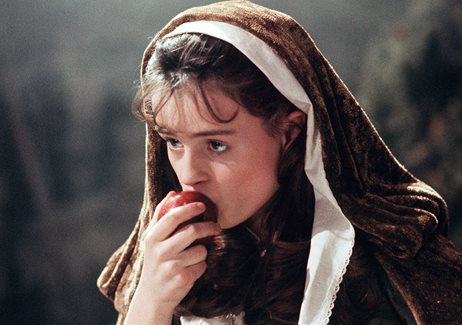
Little Red Riding Hood from The Company of Wolves (1984)
The history of fairy tales
Once upon a time, fairy tales were not for children.
Told and retold by countless storytellers, the versions we are familiar with can be very different from the ones that entertained our ancestors by the fireside. Those were stories of sex, death and curses, so morally outrageous that in 1604 the Catholic Church placed one fairy tale collection on its Index of Forbidden Books.
Fairy stories began to be seen as a threat to children as new theories about childhood and education developed. A new genre of moral children’s books was born, intended to promote rational thought and Christian morality. Instead of princesses in enchanted castles in faraway places and long ago times, stories were set in the modern world where naughty children met wretched fates and pious children gave heartfelt deathbed speeches warning of the perils of Hell.
East Midlands Connections
But good fairy stories triumphed. The first English-language publication of Hans Christian Andersen’s stories from 1846, was translated by Nottingham’s Mary Howitt, who was so captivated by his stories that she learnt Danish specifically to translate them. A successful children’s author of the time, her best-known poem is The Spider and the Fly.
Children’s books became beautiful in the 19th century, when iIlustrators such as Kate Greenaway became household names. Manuscripts and Special Collections owns a scrapbook of her pencil sketches, given to the University of Nottingham in remembrance of her childhood years spent at Rolleston in Nottinghamshire.
Exhibition themes
The From Rags to Witches exhibition boards which were displayed in the Weston Gallery are available to download or view online.
Introduction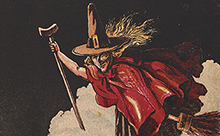
Little Red Riding Hood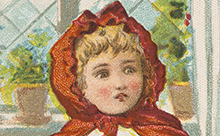
Rapunzel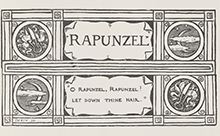
Sleeping Beauty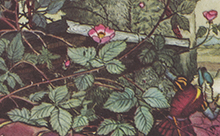
Tom Thumb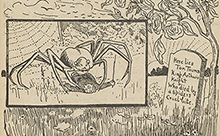
Cinderella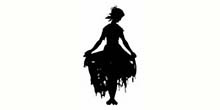
Case themes
In the exhibition gallery, cases were dedicated to specific themes. While it is not possible to display images here of the items that were on display in the exhibition you can view the boards which introduced each case theme.
East Midlands Authors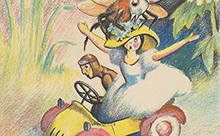
Early children's books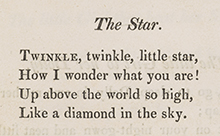
Cultural themes in fairytales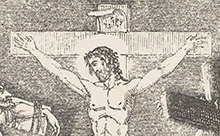
Accessing items from our collections
Items from our collections are available to consult in the Manuscripts and Special Collections reading room on King's Meadow Campus.
You can search our catalogues to find items in the manuscript and printed collections relating to fairy tales and children's literature.
Short films and tours
Join archivist and curator, Kathryn Steenson for a guided tour of the From Rags to Witches exhibition...
Watch our series of short films introducing items from our collections...
Focus on: Cautionary Tales
Focus on: Wonderful Stories
Focus on: Kate Greenaway's Album
From the blog
Read our series of blog posts on fairytales and children's literature...
Kate Greenaway's Album 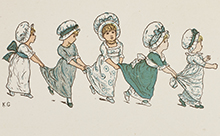
Remembering Hans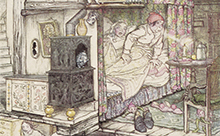
A Token of Childhood 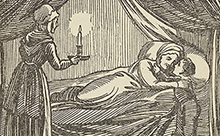
Turn the pages
Read digitised copies of two traditional fairytales, Little Red Riding Hood and Tom Thumb.
These versions of the stories appeared in cheap, mass-produced pamphlets in the 19th century.
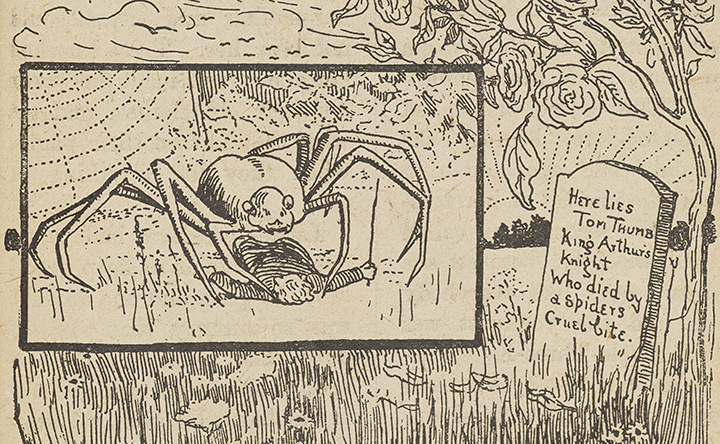
Visitor comments
Wonderful! Gruesome! Loved the labels to some of the publications - hysterically funny! Thank you.
We both really enjoyed this exhibition...it has inspired us to go away and read more.
Get the latest updates
Follow Manuscripts and Special Collections Exhibitions on twitter @mssLakeside to keep up to date with the latest exhibition news.